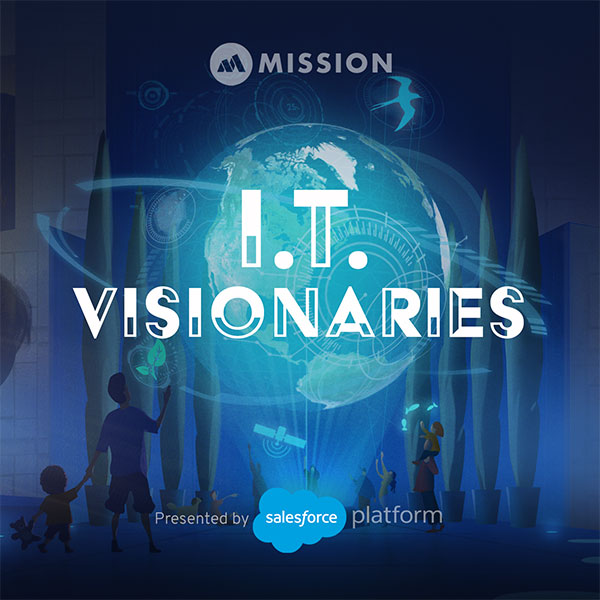Kasturi Rangan has been a gamer his entire life. But for him, gaming is more than a passion, it’s a calling. Rangan has devoted his professional career to building up the gaming community and helping gamers around the world connect and advance the movement. Today, he is the president of Pole to Win and manages people throughout the world dedicated to that same mission. And they’re succeeding. Pole to Win has worked on some of the biggest games on the market and the clients they partner with are so happy with the experience, Pole to Win has a 98% client retention rate.
But what does it mean to build a gaming community? How do you actually make sure that the gamer’s experience is not just good, but exceptional? What was the secret sauce that Pole To Win brought to the table to help launch eight of the last 10 games of the year? Rangan answers those questions and more on this episode of IT Visionaries.
Best Advice: “Try to be selfless. Don’t worry about pay. As long as you have food on the table and you can sleep at night and you have all the basic necessities, just work hard in terms of what’s the legacy you want to leave and what are you going to be proud about. And of course, make time, family and friends and all of that. In terms of QA, experience is the most important thing. So focus on experience over everything else… Make sure you don’t focus on productivity based on metrics which are obsolete or which aren’t in trend anymore. Try to improvise from then and try to challenge convention to the best you can.”
Best Quote: “Developing a game is just madness. I have no other way to define it. It’s just a melting pot of madness.”
Key Takeaways:
- The main focus of Pole To Win.
- A day in the life of a QA Analyst
- The future of gaming
- The secret to client retention
More than a gamer
Rangan has been in love with gaming his entire life, and very early on he knew that he wanted to do more with the platform than just level up in the latest Sega release.
“I started gaming when I was 10 or 12 …I think back then I realized that this is definitely something I want to pursue longterm. I want to be making games, I want to be contributing to the gaming world and leaving a legacy doing something that is revolutionary for people out there.”
About Pole To Win
Pole To Win works with a boutique mindset and has helped create, test and build some of the biggest games on the market. From QA to testing to audio production, PTW offers elite services to some of the top gaming studios and gaming companies in the world. But PTW is not solely for game creators. Rangan explains that PTW offers app software, website building and other custom-experience creation for many industries.
One of the main focuses for PTW when it comes to gaming is QA. Every company that puts out a game invests in QA, but only as much as they can afford. The problem is that QA is the most important step in the process for a game. So while the company releasing the game focuses on getting the product out the door, Rangan and his team put the game through the wringer. They play the game every possible way and work through every possible player experience in order to fully understand what works, what doesn’t, where things can break down and what players can expect when they press the “on” button. When this kind of work doesn’t happen, players like Rangan get frustrated with the number of bugs and glitches that occur during gameplay. Gamers spend huge amounts of money on their gameplay setups, and so games today have to meet those high standards. If they don’t, the companies that make them could be looking at losses in the millions.
“You have to scale up in terms of quality in parallel, as fast as you can. My advice to game creators would be to really invest in player experience quite a bit before you even launch the game.”
“I think [companies] get pressured into what’s the best bet I’m going to take right now to get the game out of the door and what can I just fix like along the way. And what I’ve seen in the past is the ones who make a wise decision on that, choose which bugs they really want to fix before launch and which bugs they want to keep postlaunch, that’s a critical piece right there. And sometimes they mess that up, where they choose some of the wrong bugs and they try to go more for the experience than for quality… It really comes down to, you know, what risks they take and that’s going to define it, and it’s going to make it or break it longterm.”
Inspiring innovation
Rangan says innovation has to be focused on problem-solving. If you know what the end experience should be, PTW can help you build that experience through innovative thinking.
A day in the life of a QA worker
Working on QA in the gaming industry is not an easy life of playing the newest coolest games every day. Rangan says it’s a challenging job that takes a lot of concentration and involves knowing everything there is to know about standards, compliances and the minutia of the gaming world. More than two years of training is put into becoming a QA tester.
The future of gaming
Everyone is excited about AR and VR technology advancing the world of gameplay. However, there are still challenges in creating what Rangan calls a seamless experience. Currently, there is a large population that cannot stomach AR or VR for any length of time. And it’s not enough to just discount that group. You have to solve for them and come up with a way to reach them with the technology in a way that will not affect them physically. Those types of technical challenges are exciting for everyone working in the industry.
If you look into the future, Rangan believes that AR and VR technology can become so good that you can use gameplay as a kind of immersive therapy because the experience will be relaxing. Plus, the advancements can become so good that they can be used in other fields such as medicine to practice surgery and other procedures.
“I haven’t found a game that I’m like, ‘Oh my God, I want to play it. I want to wake up and play that game because it was so good on VR.’ And I think the day that the industry reaches that with an experience which is comfortable, when they can solve comfort without any issues… then the immersiveness becomes more of a happy place, it becomes more interesting and it’s more fun.”
The secret to client retention
With a client retention rate of 98%, Rangan and the crew at Pole to Win are clearly doing something right. The first thing Rangan points to is culture. Client retention, Rangan says, is directly proportionate to employee retention, so you have to focus on creating the right environment for your employees to thrive. What that means practically for Pole to Win, was giving employees 100% raises a few years back. And it means that even though margins are thin, finding ways to use those margins to give back to employees.
“People come first. That’s it. Period. However, you want to put it, slice and dice it — take care of your people and they’ll take care of you. We have a hierarchy, but we don’t even follow it for the most part.”





